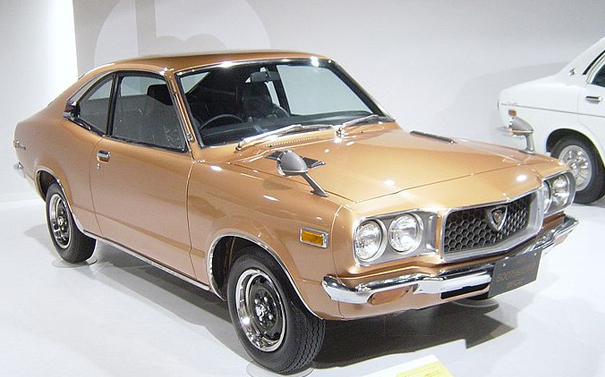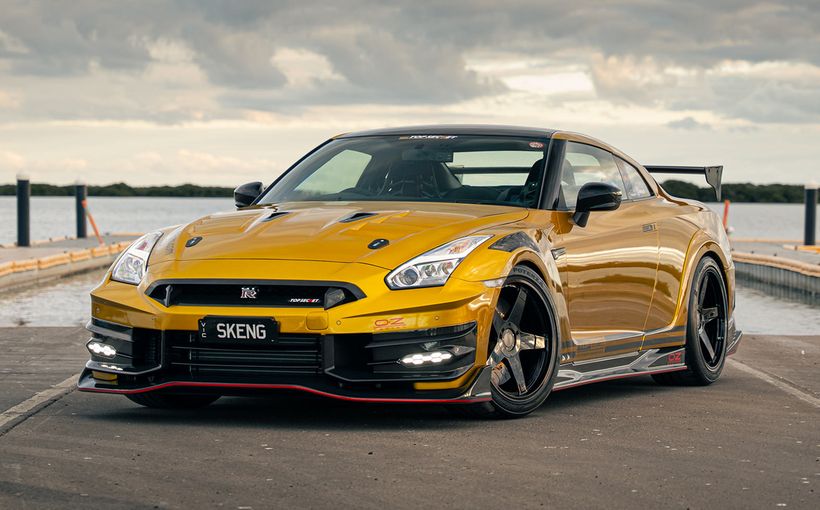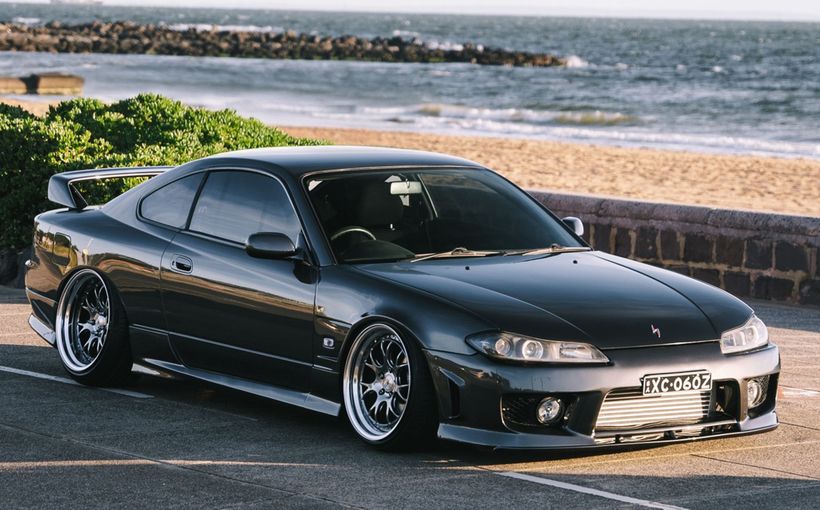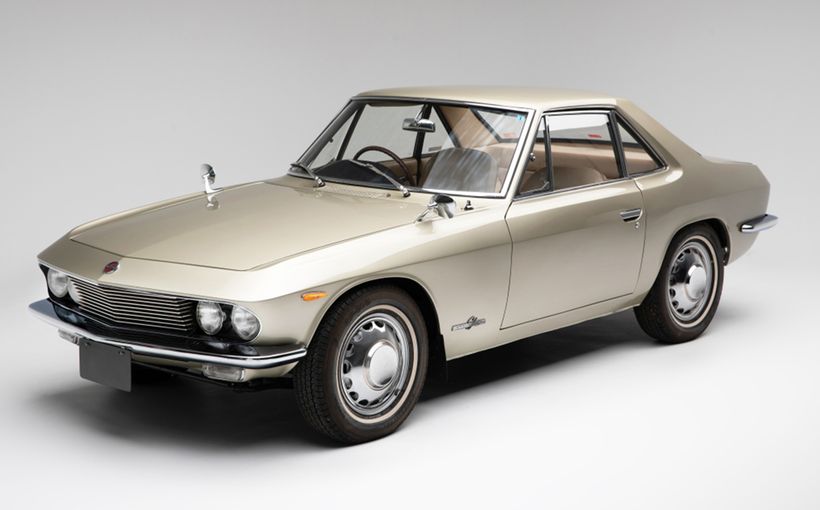Savanna RX-3: The Mazda that Saved the Rotary

As global manufacturers jettisoned their rotary engine programs, it was the Mazda RX-3 launched in 1972 that showed it could survive fuel consumption and emissions hurdles. It was a close call then, and no less so today, as the RX-8 has succumbed to the same challenges with no news of a rotary replacement.
The rotary sucked the life out of Mazda’s piston engine programs. If the desperate, last-minute repackaging of the ageing 1300 mechanicals as the first 323 hatchback had not found buyers, it was curtains for Mazda and the rotary.
The RX-3 story is an amazing saga of survival against the odds. It was also the first and last entry level rotary that catered for sedan, wagon and coupe buyers in different markets. The RX-7 that followed immediately after was the reward. Much of this drama played out in Australia.
Back then, Australia, with its strong mix of European and North American priorities, was a crucial export market for Japanese companies during this era who regarded local market acceptance as a litmus test for global sales.
The pioneering customer support systems that kept the rotary engine alive in its darkest hour were developed in Australia. The patience and co-operation of the strong local enthusiast base who embraced the rotary from the start played a critical role in supporting Mazda engineers as they addressed vital development issues for global application.
Because the RX-3 was so accessible and had such a high profile on local race tracks, it was the first rotary model to generate mainstream acceptance. Its local arrival also landed it in the middle of Australia’s first emissions laws and a boost in fuel prices. There were two distinct versions as Mazda battled to keep the RX-3 and its engine alive against this backdrop.

Rotary Background
A technical breakdown of how a rotary works could not convey the excitement that this new engine generated in the 1960s. Just as DDT was seen as the simple one-stop measure to rid the planet of malaria, the rotary engine seemed the logical and simple alternative to the complexity of the piston engine.
Its development then became as complex and diverse for its era as hybrid technology is proving today. Resources committed to the rotary rose in direct proportion to the loss of interest in the gas turbine as a viable alternative.
Because the rotary now has to compete against diesels, piston engine advances, electric cars and hybrid systems for development funds, its days are numbered.
Its simplicity was based on a three-sided rotor with seals at each point that rotated inside an oval chamber on an eccentric shaft that acted as a crankshaft. As the rotor was forced by this eccentric shaft against the inside walls of its housing, its seals formed intake, compression, combustion and exhaust phases on its way round.
When, where and how best to introduce the fuel-air mixture then clear the exhaust would become some of the most hotly contested issues in the global motorsport arena. Peripheral versus bridge versus side ports would almost become household terms even if few knew what it all meant.
Either way, the rotary started out no bigger than the gearbox behind it.
Making the rotor tip seals effective in such a hot and contaminated environment at the much higher revolutions generated by the rotary challenged everything known to man about metal, carbon and oil chemistry. The rotary engine if nothing else pushed the science and production processes for metal coatings and carbon and metal seals to new levels.
Because all the phases in the rotary’s cycle are so transient and there are no valves or combustion chamber as such, achieving a clean burn for optimum fuel efficiency and low emissions by design hit a plateau during the RX-3’s model life. Keeping everything lubricated in this transient environment also ensured that constant engine oil consumption was a given which generated its own emissions issues.
The attention then had to quickly switch to developing an after burner system to torch-off what wasn’t burnt in the original combustion phase. Even if this addressed the emissions issues, the energy and heat released in this process highlighted how much was escaping without any benefit to the engine (and owner).

The other shortfall remains the lack of leverage or stroke in the eccentric shaft. The combination of conrods and crankshaft stroke in piston engines are critical to torque delivery. Just as turbochargers can compensate for this in small piston engines, turbos are highly effective in rotary engines but the extra stresses they impose on seals and other components can be more life-threatening.
After NSU pioneered the Wankel rotary patent as a production reality in its tiny Spider, it went on to develop the large Ro80 family car around the rotary. Even after this ground-breaking design exploited the rotary’s best attributes, its size and everyday usage highlighted the lack of torque and unresolved durability issues.
Mazda took a more measured path. The sleek Mazda Cosmo Sport was the perfect showcase for what the new engine could achieve. Initially just 60 were built for evaluation in 1966-67 before it went on sale later in 1967. Limited production continued until 1972.
Also in 1967, Mazda presented a two door Hardtop version of its Bertone-designed 1500 family car (it was penned by a young Giugiaro). It went on sale as the R130 late in 1969 as part of the 1500/1800 Luce family, bizarrely with a front drive layout totally different from the rear drive sedans.
Neither model was sold in Australia. That changed when a rotary version of the Mazda 1200/Familia was marketed as the R100. Available as a four door sedan and coupe in Japan, only the coupe version was sold in Australia.
Launched locally in 1969, it found a steady following amongst buyers who loved its exquisite finish, neat styling and extra turn of speed for such a small car. Although sometimes successful on the race track, its narrow track, skittish rear end and tall 14 inch wheels ensured that most examples at some point ended up on their roofs.
This is where the Savanna RX-3 changed the rotary’s fortunes overnight. Hot on the heels of the Capella/RX-2 version which was a step in the right direction, the Savanna RX-3 found a sweet spot in size, weight and price that suited the rotary. In Japan, it was presented as the rotary for everyone with a choice of coupe, sedan and wagon. In Australia, it was sold as a sedan and coupe.

The Mazda Rotary Family
Just as piston engines are sized according to bore and stroke, rotaries have several critical measurements that define their capacity and performance. These include:
Eccentricity (e): the amount of offset between the rotor centre line and the eccentric shaft centre line. In function, it is similar to a stroke measurement.
Generating Radius (r): the distance between the rotor centre line and the apex of the rotor. In the Wankel’s case, this measurement applies to the three tips.
Chamber width (w): rotors can vary in depth or thickness which defines the width of the trochoid chamber. In function, it is similar to a bore measurement.
Single Chamber capacity (cc) times number of chambers: The actual volume of the working chamber is calculated by a complex formula and multiplied by the number of rotors for a total capacity.
Because this figure is not directly comparable to the capacity of a piston engine, various equivalency factors are applied. In some cases, the equivalency factor is double, others multiply the rotary’s volume by1.5.
In order of appearance:
Type 10A
Original Prototype/Production: e=15mm, r=105mm, w=60mm, cc=491x2
This engine was developed as a twin plug per chamber with twin distributors for the original 1967 Cosmo Sport L10A. Without pollution equipment, its big advantage was compact size and a weight of 102kg compared to 170kg plus for an equivalent piston engine. After this engine was further developed for the Cosmo Sport L10B (confusingly the engine was still a 10A), its output rose from 82kW/130Nm to 95kW/140Nm.
This engine was detuned for the R100 to 75kW/132Nm with the torque peaking at much lower revs.
The 10A was further developed for the RX-2 with a new heat retaining cast-iron exhaust-port extension chamber for further oxidation of exhaust gases. The cast aluminium trochoid housing received a new combination coating of steel and chrome. Output was now 78kW/135Nm but weight had climbed to 128kg.

Type 13A
Original Prototype: e=17.5mm, r=120mm, w=60mm, cc=655x2
This was the one-off small bore, long stroke engine developed for the front drive R130 Luce Rotary coupe that needed extra torque but the 10A’s shorter length. It was developed to fit ahead of the longitudinal FWD transaxle (Audi-NSU Ro80 style) in the space originally intended for 1500/1800 rear drive piston engine.
Type 12A
Original Prototype: e=16.4mm, r=112mm, w=60mm, cc=573x2
Production: e=15mm, r=105mm, w=70mm, cc=573x2
After stroking the 10A to boost capacity for the prototype 12A, Mazda discovered that by simply increasing the “bore “ or depth of each chamber was a simpler and more cost-effective production method.
This engine was launched in the RX-2 based on the 616 Capella followed by an emissions version for the US RX-3 in 1972. This engine was later standardized in Australian RX-3 models.
It was then extensively re-developed for the first RX-7 and remained the powerplant of Australian RX-7 deliveries until 1986 (its development will be subject of a future story). A fuel-injected turbo 12A was developed for the Japanese market for 1982-85 but weight had crept up to 162kg.
Type 13B
Production: e=15mm, r=105mm, w=80mm, cc=654x2
The 13B had the widest bore of the production rotaries but shares other dimensions with the 10A and 12A. A 1973 Japanese development, it was seen in Australia in the 929-Luce based RX-4 and the Japanese Cosmo model known as the RX-5 locally. It was also installed in the Australian HJ/HX Holden Premier body from 1975-78 marketed in Japan as the Mazda Roadpacer.
The 13B powered later 929 models but not in Australia. It was withdrawn in 1981.

Type 13B DEI
Original Prototype/Production: e=15mm, r=105mm, w=80mm, cc=654x2
The 13B was revived with Dynamic Effect Intake (DEI) and fuel injection for the final RX-7 examples of the original series and the Luce/Cosmo 929 series, both offered in Japan but not locally. It was then totally re-developed for the 1986 RX-7 known locally as the Series IV, the first RX-7 to be offered with a 13B in Australia.
The Local RX-3
The RX-3 was powered by two very different rotary engines over its local 1972-76 model life. The third series or second facelift was not offered in Australia but continued into 1978 in the US market where it was replaced by the first RX-7. The success of the RX-3 coupe was the catalyst for the RX-7 and heavily influenced the final specification.
In Australia, stiff tariffs and quota forced Mazda to adopt a different strategy. Mazda had three years to lift the perception of the rotary from the $4500 sticker of the final RX-3 to support the release of a $15,000 RX-7 in 1979.
The $7000 RX-4 and $9000 RX-5 were important building blocks as Mazda was forced to re-think its rotary strategy. The add-on pollution equipment and costly development had re-defined the rotary as a premium high performance option rather than a performance boost for a cheap and cheerful model.
Also on the horizon was the amazing boost in refinement and efficiency in the latest piston engines driven by more exacting production processes, smaller-capacity multi-cylinder engines and the arrival of balancer shafts. They were rapidly closing the gap on the rotary’s uncanny smoothness and willingness to rev.
Although the rotary engine in the RX-7 allowed a wedge-shaped nose almost as sleek as a mid-engined coupe, its sharp styling was not enough to support its $15,000 asking price in Australia. In the US, the RX-7 started at $US7000 compared to $8500 for the Datsun 280Z and $11,000 for the Porsche 924.
In Australia, the Porsche 924 at $Aud25,000 and the Nissan 280ZX at $19,000 struggled to find buyers at a time when the top of the range VB Commodore SL/E 5-litre set a new benchmark for a sports-luxury model at $12,500.
The road and track performance of the RX-3 with the same 12A engine and the performance pedigree that it added to the Mazda badge were vital stepping stones in the local RX-7’s sales success.

Savanna RX-3 Series I
Mazda re-packaged the baby 1300 mechanicals in a half-size bigger four door sedan, wagon and coupe and called it the 808 or Savanna. This was the same class as the Toyota Carina which generated the first Celica. The later Mitsubishi Cordia based on the Tredia sedan was also from this class.
Where rivals used twin-cams and later turbos to boost power, the Mazda 10A rotary was offered as a performance option with detailed styling changes to match. The wagon version was not offered in Australia.
The 808 Coupe cost $2899 in 1972 when the RX-3 equivalent cost an extra $600. For $3499, the RX-3 buyer brought home 71kW/138Nm of free-revving rotary compared to the lethargic 44kW/90Nm of the 1300-engined 808.
Although the RX-3 sedan at 895kg was 70kg heavier than its 808 equivalent, mostly from the extra equipment and tougher driveline, the lift in performance was dramatic. Top speed jumped from 141 to 185km/h and the standing quarter dropped from 19.6 to 17.8 seconds. Fuel consumption was around 30 per cent higher, no more than comparable performance upgrades for the era but the high oil consumption was an added cost.
Despite the shared origins, very few areas were not changed or upgraded. Although both the 808 and RX-3 shared the same 51mm boost in track, the RX-3 with its standard fatter radials was better placed to exploit it.
Outside, the RX-3’s more aggressive snout, quad headlights and large round tail lights added attitude. Inside, black trim, a centre console, extra gauges and mock woodrim wheel changed the entire cabin feel.
Upgraded power assisted brakes and the better tyres matched the performance but reports suggested that Mazda had not succeeded in tuning the wallowy front suspension for the rotary’s lighter weight creating a mismatch with the firmer rear end. In road specification, Mazda had yet to exploit the better balance of the rotary-powered RX-3.
None of this was difficult to rectify as there was no shortage of specialists waiting to fine tune the suspension. Little more than a decent set of front springs and shocks would deliver a club car that was unusually agile.
The 10A rotary was now proving reliable and relatively long-lived providing owners started it up on a regular basis to avoid damage to the seals. Getting it to fire on a cold day still required some patience.
The most distinctive feature of the first RX-3 was how empty the engine bay appeared and how smooth it was under duress for such a basic but powerful car. Despite the 10A’s twin distributors, plumbing and wiring were conspicuous by their absence. This was about to change.



Savanna RX-3 Series 2
For 1974, the RX-3 gained the 12A engine from the RX-2 but it wasn’t a straight swap for the 10A in equivalent specification. A quick look under the bonnet with all its extra plumbing and wiring, despite the switch to a single distributor, soon confirmed that it was more than an engine change.
Pre-empting new Australian emissions rules by two years, the revised RX-3 was offered with full US emissions gear and the claim that it was now the cleanest engine offered in Australia.
It was an essential and timely move to counter growing local concerns that the rotary had no future as it was so “dirty”. The cost was extra thirst and loss of torque at lower engine speeds despite the bigger engine but once on the move, it was faster.
For Americans who were used to similar emissions gear on piston engines, such an emissions 12A rotary under RX-3 bonnets was no big deal. For Australians who wouldn’t see their first local engines with a comprehensive emissions package until ADR27A in 1976, it was intimidating.
Called REAPS (Rotary Engine Anti-Pollution System), there were three key components: a computer, which in today’s terms was little more than a rudimentary control unit, a cool air pump and a thermal reactor.
To most Aussie buyers, the last item sounded a little too close to a thermonuclear reactor, an impression reinforced by the strange square exhaust outlet supplemented by a round exhaust pipe that ran alongside of it.
Coupled with the overhead exhaust warning light inside, it was easy to conclude that this second pipe was some sort of emergency overflow if things got out of hand. Various estimates suggested there was up to seven metres of plumbing under the car. A quick peak underneath would suggest that if it wasn’t a thermonuclear reactor under there, there was a good chance it was a distillery.
It took a committed buyer to get past these impressions.
In reality, the engine had a secondary combustion chamber downstream of the rotor chamber minus spark plugs. It was designed to retain temperatures high enough to torch off anything that hadn’t burnt in the main combustion phase. The computer controlled the amount of air needed to ignite it.
The air pump was there to feed air into the thermal reactor as well as cool the outside. After cooling the reactor, the air was expelled though the secondary round exhaust pipe. The overheating exhaust warning light was triggered by a relatively simple sensor that sat above the rear muffler in the boot, in case the pump failed and stopped the vital fresh air flow through the system.
There was also a comprehensive fuel tank vapour trap system that led into a large rubber pipe that entered the charcoal filter located in the centre of the air-cleaner.
The bottom line was a rotary that hated partial-throttle urban driving but rewarded hard driving on the open road, at which point fuel consumption would match some of Australia’s bigger V8s.
Mazda didn’t release power figures for good reason and the 97kW claimed by some sources is bizarre as this is higher than what the 13B delivered in the RX-4 and RX-5 with similar emissions equipment.
It was certainly not reflected in the car’s performance. Nor could it have been higher than the 85kW claimed for the later and much improved 12A in the RX-7.
This would explain why the standing quarter was no quicker and why top speed hadn’t changed but over 80km/h, this later RX-3 would lift its nose as soon as the larger capacity could make a difference. Mazda was still being held to account for not working on the suspension with ride and handling coming in for some stick.
More aggressive front styling and a new tail light configuration (though still round) added some menace. As it turned out, for the wrong reasons! Wheels in March 1974 noted that the understeer was so brutal that the photographer fled soon after capturing the evidence!
Although it retained the same price as the earlier car in 1974, this later RX-3 rocketed to over $4500 by March 1976 at which point Australian buyers said no thanks. Mazda was left to clear the final examples for some time.

The RX-3 Legacy
The entire local market was moving to larger piston engines to counter emissions equipment. By 1977, the Mazda 808 with its facelifted front and 1600 engine which provided adequate performance without the heavy fuel consumption was closer to what a buyer in the $5000 range needed. It kept the Savanna body shape alive until 1978.
As an image builder, the rotary had succeeded in lifting Mazda to another level as a technology leader, not follower, just in time for the first RX-7. Yet the 1977 Mazda 323 was Mazda’s real future. With Mazda’s new found credibility, it was embraced immediately as the right car for its time, a positioning that the Mazda3 retains to this day.

Protect your Mazda. Call Shannons Insurance on 13 46 46 to get a quote today.









